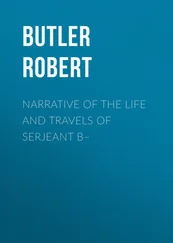Robert Vane Russell - The Tribes and Castes of the Central Provinces of India, Volume 4
Здесь есть возможность читать онлайн «Robert Vane Russell - The Tribes and Castes of the Central Provinces of India, Volume 4» — ознакомительный отрывок электронной книги совершенно бесплатно, а после прочтения отрывка купить полную версию. В некоторых случаях можно слушать аудио, скачать через торрент в формате fb2 и присутствует краткое содержание. Жанр: foreign_prose, История, foreign_edu, foreign_antique, на английском языке. Описание произведения, (предисловие) а так же отзывы посетителей доступны на портале библиотеки ЛибКат.
- Название:The Tribes and Castes of the Central Provinces of India, Volume 4
- Автор:
- Жанр:
- Год:неизвестен
- ISBN:нет данных
- Рейтинг книги:4 / 5. Голосов: 1
-
Избранное:Добавить в избранное
- Отзывы:
-
Ваша оценка:
- 80
- 1
- 2
- 3
- 4
- 5
The Tribes and Castes of the Central Provinces of India, Volume 4: краткое содержание, описание и аннотация
Предлагаем к чтению аннотацию, описание, краткое содержание или предисловие (зависит от того, что написал сам автор книги «The Tribes and Castes of the Central Provinces of India, Volume 4»). Если вы не нашли необходимую информацию о книге — напишите в комментариях, мы постараемся отыскать её.
The Tribes and Castes of the Central Provinces of India, Volume 4 — читать онлайн ознакомительный отрывок
Ниже представлен текст книги, разбитый по страницам. Система сохранения места последней прочитанной страницы, позволяет с удобством читать онлайн бесплатно книгу «The Tribes and Castes of the Central Provinces of India, Volume 4», без необходимости каждый раз заново искать на чём Вы остановились. Поставьте закладку, и сможете в любой момент перейти на страницу, на которой закончили чтение.
Интервал:
Закладка:
Kuramwār
Kuramwār. 48 48 This article is compiled from notes taken by Mr. Hīra Lāl and by Pyāre Lāl Misra, Ethnographic clerk.
—The shepherd caste of southern India, who are identical with the Tamil Kurumba and the Telugu Kuruba. The caste is an important one in Madras, but in the Central Provinces is confined to the Chānda District where it numbered some 4000 persons in 1911. The Kuramwārs are considered to be the modern representatives of the ancient Pallava tribe whose kings were powerful in southern India in the seventh century. 49 49 North Arcot Manual , vol. i. p. 220.
The marriage rules of the Kuramwārs are interesting. If a girl reaches adolescence while still single, she is finally expelled from the caste, her parents being also subjected to a penalty for readmission. Formerly it is said that such a girl was sacrificed to the river-goddess by being placed in a small hut on the river-bank till a flood came and swept her away. Now she is taken to the river and kept in a hut, while offerings are made to the river-goddess, and she may then return and live in the village though she is out of caste. In Madras, as a preliminary to the marriage, the bridegroom’s father observes certain marks or ‘curls’ on the head or hair of the bride proposed. Some of these are believed to forecast prosperity and others misery to the family into which she enters. They are therefore very cautious in selecting only such girls as possess curls ( sūli ) of good fortune. The writer of the North Arcot Manual 50 50 Vol. i. p. 224.
after recording the above particulars, remarks: “This curious custom obtaining among this primitive tribe is observed by others only in the case of the purchase of cows, bulls and horses.” In the Central Provinces, however, at least one parallel instance can be given from the northern Districts where any mark resembling the V on the head of a cobra is considered to be very inauspicious. And it is told that a girl who married into one well-known family bore it, and to this fact the remarkable succession of misfortunes which has attended the family is locally attributed. Among the Kuramwārs marriages can be celebrated only on four days in the year, the fifth day of both fortnights of Phāgun (February), the tenth day of the second fortnight of the same month and the third day of Baisākh (April). At the marriage the bride and bridegroom are seated together under the canopy, with the shuttle which is used for weaving blankets between them, and they throw coloured rice at each other. After this a miniature swing is put up and a doll is placed in it in imitation of a child and swung to and fro. The bride then takes the doll out and gives it to the bridegroom, saying: ‘Here, take care of it, I am now going to cook food’; while after a time the boy returns the doll to the girl, saying, ‘I must now weave the blanket and go to tend the flock.’ The proceeding seems a symbolic enactment of the cares of married life and the joint tending of the baby, this sort of symbolism being particularly noticeable in the marriage ceremonies of the people of Madras. Divorce is not permitted even though the wife be guilty of adultery, and if she runs away to her father’s house her husband cannot use force to bring her back if she refuses to return to him. The Kuramwārs worship the implements of their calling at the festival of Ganesh Chaturthi, and if any family fails to do this it is put out of caste. They also revere annually Mallana Deva and Mallani Devi who guard their flocks respectively from attacks of tigers and epidemics of murrain. The shrines of these deities are generally built under a banyan tree and open to the east. The caste are shepherds and graziers and also make blankets. They are poor and ignorant, and the Abbé Dubois 51 51 Hindu Manners, Customs and Ceremonies .
says of them: “Being confined to the society of their woolly charge, they seem to have contracted the stupid nature of the animal, and from the rudeness of their nature they are as much beneath the other castes of Hindus as the sheep by their simplicity and imperfect instruction are beneath the other quadrupeds.” Hence the proverbial comparison ‘As stupid as a Kuramwār.’ When out of doors the Kuramwār retains the most primitive method of eating and drinking; he takes his food in a leaf and licks it up with his tongue, and sucks up water from a tank or river with his mouth. They justify this custom by saying that on one occasion their god had taken his food out of the house on a leaf-plate and was proceeding to eat it with his hands when his sheep ran away and he had to go and fetch them back. In the meantime a crow came and pecked at the food and so spoilt it. It was therefore ordained that all the caste should eat their food straight off the leaf, in order to do which they would have to take it from the cooking-pot in small quantities and there would be no chance of leaving any for the crows to spoil. The story is interesting as showing how very completely the deity of the Kuramwārs is imagined on the principle that god made man in his own image. Or, as a Frenchman has expressed the idea, ‘ Dieu a fait l’homme à son image, mais l’homme le lui a bein rendu. ’ The caste are dark in colour and may be distinguished by their caps made from pieces of blankets, and by their wearing a woollen cord round the waist over the loin-cloth. They speak a dialect of Canarese.
Kurmi
1. Numbers and derivation of name
Kurmi. 52 52 In this article some account of the houses, clothes and food of the Hindus generally of the northern Districts has been inserted, being mainly reproduced from the District Gazetteers.
—The representative cultivating caste of Hindustān or the country comprised roughly in the United Provinces, Bihār arid the Central Provinces north of the Nerbudda. In 1911 the Kurmis numbered about 300,000 persons in the Central Provinces, of whom half belonged to the Chhattīsgarh Division and a third to the Jubbulpore Division; the Districts in which they were most numerous being Saugor, Damoh, Jubbulpore, Hoshangābād, Raipur, Bilāspur and Drūg. The name is considered to be derived from the Sanskrit krishi , cultivation, or from kurma , the tortoise incarnation of Vishnu, whether because it is the totem of the caste or because, as suggested by one writer, the Kurmi supports the population of India as the tortoise supports the earth. It is true that many Kurmis say they belong to the Kashyap gotra , Kashyap being the name of a Rishi, which seems to have been derived from kachhap , the tortoise; but many other castes also say they belong to the Kashyap gotra or worship the tortoise, and if this has any connection with the name of the caste it is probable that the caste-name suggested the gotra -name and not the reverse. It is highly improbable that a large occupational caste should be named after an animal, and the metaphorical similitude can safely be rejected. The name seems therefore either to come from krishi , cultivation, or from some other unknown source.
2. Functional character of the caste
There seems little reason to doubt that the Kurmis, like the Kunbis, are a functional caste. In Bihār they show traces of Aryan blood, and are a fine-looking race. But in Chota Nāgpur Sir H. Risley states: “Short, sturdy and of very dark complexion, the Kurmis closely resemble in feature the Dravidian tribes around them. It is difficult to distinguish a Kurmi from a Bhumij or Santāl, and the Santāls will take cooked food from them.” 53 53 Tribes and Castes of Bengal , art. Kurmi.
In the Central Provinces they are fairly dark in complexion and of moderate height, and no doubt of very mixed blood. Where the Kurmis and Kunbis meet the castes sometimes amalgamate, and there is little doubt that various groups of Kurmis settling in the Marātha country have become Kunbis, and Kunbis migrating to northern India have become Kurmis. Each caste has certain subdivisions whose names belong to the other. It has been seen in the article on Kunbi that this caste is of very diverse origin, having assimilated large bodies of persons from several other castes, and is probably to a considerable extent recruited from the local non-Aryan tribes; if then the Kurmis mix so readily with the Kunbis, the presumption is that they are of a similar mixed origin, as otherwise they should consider themselves superior. Mr. Crooke gives several names of subcastes showing the diverse constitution of the Kurmis. Thus three, Gaharwār, Jādon and Chandel are the names of Rājpūt clans; the Kori subcaste must be a branch of the low weaver caste of that name; and in the Central Provinces the names of such subcastes as the Agaria or iron-workers, the Lonhāre or salt-refiners, and the Khaira or catechu-collectors indicate that these Kurmis are derived from low Hindu castes or the aboriginal tribes.
Интервал:
Закладка:
Похожие книги на «The Tribes and Castes of the Central Provinces of India, Volume 4»
Представляем Вашему вниманию похожие книги на «The Tribes and Castes of the Central Provinces of India, Volume 4» списком для выбора. Мы отобрали схожую по названию и смыслу литературу в надежде предоставить читателям больше вариантов отыскать новые, интересные, ещё непрочитанные произведения.
Обсуждение, отзывы о книге «The Tribes and Castes of the Central Provinces of India, Volume 4» и просто собственные мнения читателей. Оставьте ваши комментарии, напишите, что Вы думаете о произведении, его смысле или главных героях. Укажите что конкретно понравилось, а что нет, и почему Вы так считаете.












